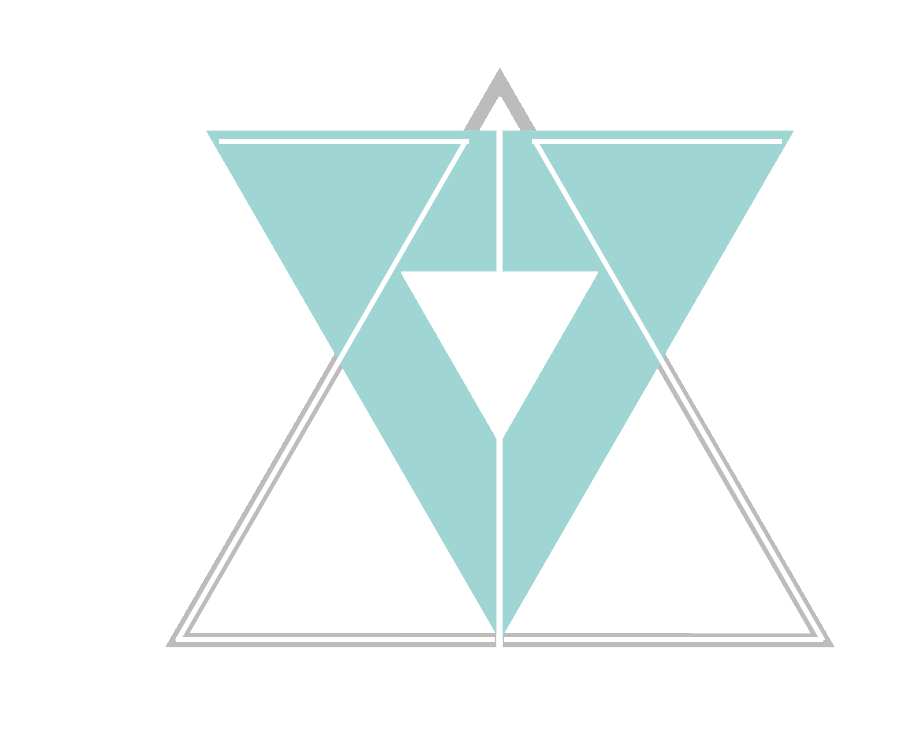Autonomous Carpool Experience Design
How passengers are going to find their autonomous carpool vehicle?
PROJECT OVERVIEW
Individual Project | 24 weeks | 2018 Summer- Now
RESEARCH
VISUALIZATION
PROTOTYPE

What will happen when autonomous vehicle replace all of our cars?
Most of information technology companies are beginning their research and development of autonomous car. In some cities, some level1 or level2 autonomous driving are are on the market for renting and purchasing. It is predictable that around 10 years, autonomous driving car would took part of place in automobile market.
As it is treated as a main future trend, there are still plenty of issues remains unknown until the day the car launched. One of the interesting area is future carpool service. If all the vehicles, or, most of the vehicles, are replaced by autonomous driving cars, how the service system would change correspondingly to fit feature of autonomous car? What kind of new problems and issues passengers will be facing ? How are the companies adjust their service to improve customer experience?
Because of its speciality of being a future research topic, in order to understand the issue and find out a proper research topic , it is essential to conduct research on current carpool system making sure that there is research value.
Let’s make sure carpool market is a great opportunity by doing some desktop research.

VIDEO REVIEW
Upon reviewing 40 videos recorded by either uber/lyft drivers or passengers, it could be confirmed that there existed a research opportunity to improve passengers’ experience. Among 40 videos, more than half of them are displaying negative emotions. Here are some frequently observed issues happened when doing carpool.

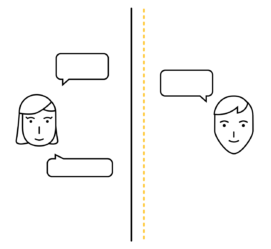
Lack of communication and information
The most frequently seen conflicts are always caused by insufficient information and communication. In most cases it was drivers receiving a new carpool request without informing the current passengers in car, thus passengers got confused that they are lead to a strange route.
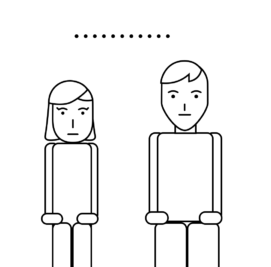
Awkward Feeling of Staying in Tiny Space with Strangers
There do exists a large group of passengers endorse the way of carpool system on their social life. However there’s still passengers prefer have a silent carpool experience and keep their private space. It is reported that some of the passengers really want to avoid interaction with anyone else when taking the carpool.
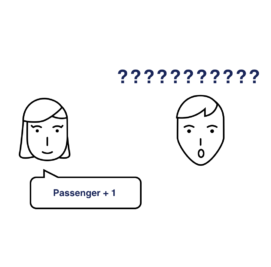
Unfamiliar with How Carpool System Works
There are new customers coming to this market these days and, usually and have no idea about carpool system. They wait at a covert place which makes it hard for drivers to find, let drivers wait for minutes and come, being annoyed when they found the routine has be changed, and feeling confused when there’s a new passenger.

LITERATURE REVIEW
What’s some of current research topic in carpool area? What kind of research methodology they are using? What kind of inspiration and prediction has been made? All of those questions will be answered by plenty of literature review.
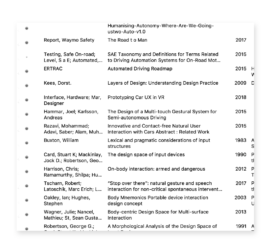
40 papers are reviewed during lit review process. The research issue includes current uber customer marketing research, passenger interaction behavior pattern , elements that would affect passenger satisfaction to the experience, human-centered research trend on autonomous car, etc. There’s some key findings that inspired me predicting a new service design system.
2 User Groups
There does exist two typical user groups – Daily working transit user, and Weekend casual users. While 70% of passengers call uber during weekdays, students and workers become the main user group for uber pool.
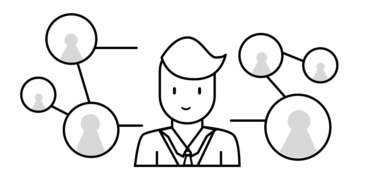
Carpool Preference
Users are more willing to carpool with someone who they are familiar with. For example, their neighbourhood, close friends, family members or at least someone who share similarity with them.
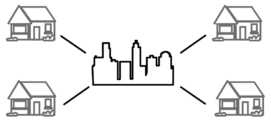
City Traffic
In most of cities, especially in North America, residence prefer living in suburb area, or cities scattered around business center rather than living close to business district.

MARKETING RESEARCH
What are people using as a replacement of the service type? It’s not the first day thay people realize there is a first mile and last mile problem. A marketing research is conducted to collect more information from users’ perspective. All user feedbacks are collected from Yelp, local Forum, Google reviews, trip Advisor, and other online resource.

UberPool
- Cheap; More convenient for drivers to find the passenger; Save extra time on traffic jam and crowded.
- Really Uncertain; It takes a few minutes for the app to determine the pick-up and drop-off locations; Waiting time is unstable and not reliable as well.
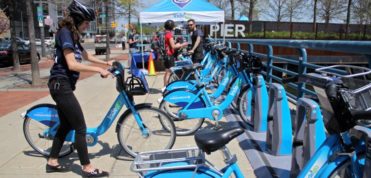
Bikeshare
- High convenience; Cheap; Usually it’s always available; Fun and Fit; Wide Coverage
- Can not take long distance trip; Renting time is very strict; There’s an Overcharge Risk
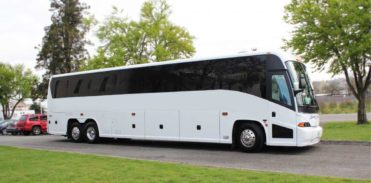
Shared Shuttle
- Cheap; Suitable for short distance trip rather than long distance ride; Seat promised.
- Driver not familiar with the route which causes delay;Driver cannot contact passenger all the time; Estimated time is not accurate; Two minutes of waiting time.
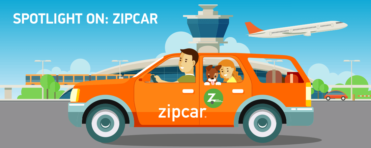
ZipCar
- Very handy and very convenient; Meet user needs for short-term usage; No need to share the car while using it.
-
Expensive; Availability is not promised; Gas filling is a big issue.;Membership required.
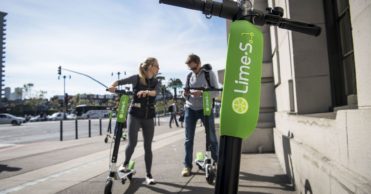
Bird & Lime Scooter
- High conveniency; Interesting experience of riding it in the city; Price is acceptable.
-
Availability is not promised;Charging , connection and regulation is tough;Ride safety is a concern.
Now we know what’s happening “Now”, but how to Solve a “Future” Problem?
Designing something is going to happen in future means there would be more research and strategy in the beginning. The methodology I take here is to research about current scenario and make a valid prediction about future scenario. The more content I added to the future scenarior, the more reliable my design oppotunity and design solution would be.

USER SCENARIO

The first iteration of journey is predicted based on current transportation system and the future trend of autonomous vehicles. A huge amount of companies are researching on future shared shuttles and its transit way. In this first iteration journey design, suburb (residence area) are divided into small areas by different communities. Small size of autonomous driving car would operate inside the small area and sending passengers to transit hub which is designed for long distance driving. Passenger would experience the same process as current transit system, but all the cars are replaced with autonomous car. They will car-pool with someone they are familiar with, also they would book the entire ride before departing. Using some specific algorithm, there’s almost no waiting time while transiting.
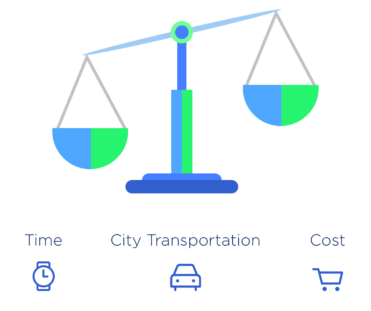
Any transportation service design is looking for a balance at “cost” “time” and “city public transportation”. In traditional transportation system, improving one of the three index means sacrificing another index. The unique advantage from autonomous driving car is that it could improve one index without reducing another index. In the new system, cost might keep the same, or being a bit cheaper than current price while passengers will save time as well as contribute to city public transportation.

Comparing the overall experience journey to some of the current service type, it could be told that new system is providing more user options and will embrace most of the features that current service type have.
How should I validate my hypothesis of user scenario and design opportunity?
However, it couldn’t be the final prediction of future autonomous carpool service. Most of its feature is predicted based on desktop research. In order to validate that the user scenario from my prediction is actually acceptable and realistic in future, I chose to conduct an observation to see what are users willing to do, what are problem that already existed now and what are likely to happen in the near future?
A field observation was conducted during summer 2018 in city of Atlanta. Multiple observation points are selected with different features that can be projected into my predicted user journey.

FIELD OBSERVATION
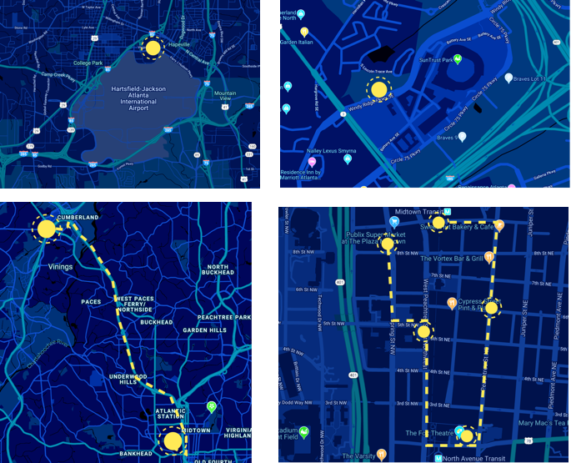
Clough Library
- Small amount Passengers. Frequent and Continuous Passenger
SunTrust Baseball Stadium
- Large amount of passengers in peak time. Small amount passengers out for peak time
Atlanta Airport
- Continuously large amount of passengers. There’s no “peak hour” or “spare hour”
Midtown Business District
- Small amount Passengers. Scattered pick up points
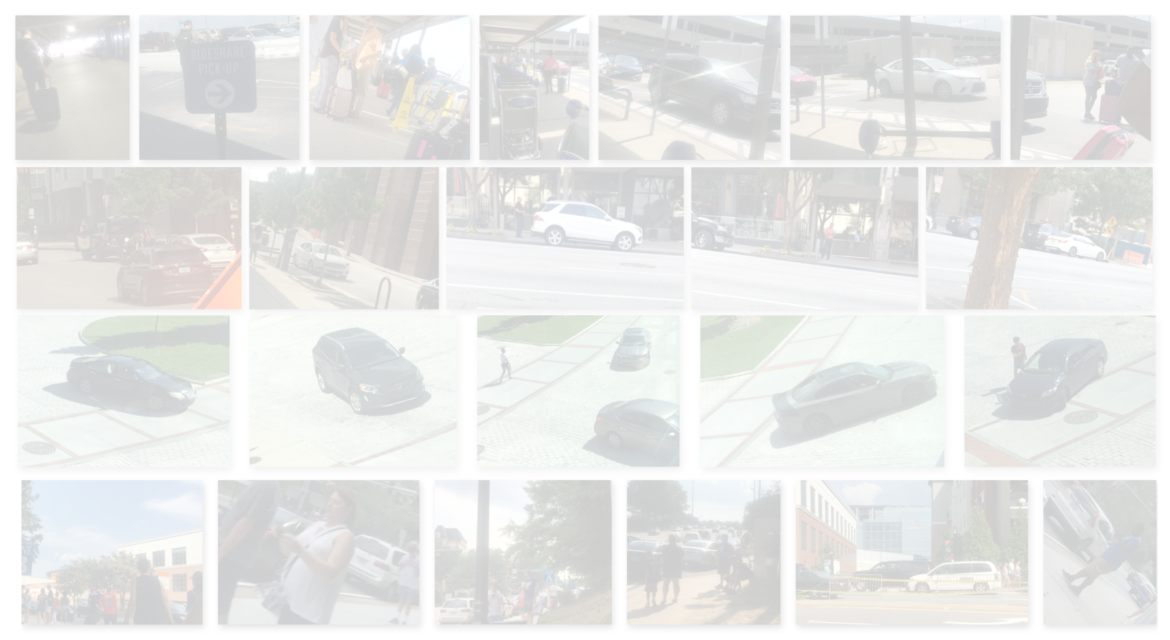
Summary of Observation
- In different cases, its effect varies for “Cars waiting for passengers” or ” Passengers waiting for cars”
- In most cases observed, passengers are willing to work a while for picking up.
- Current waiting area is running in a low efficiency way.
- Pick up process is most likely time period having some issues currently.
- Phone is widely used for both drivers and passengers.
- With drivers, passengers could get picked up even in non-standard locations. However in future it would be difficult.

PAIN POINT

Passengers can’t find their Carpool Vehicle.

How can I know what information is helpful and important?
Car location? Template number? How far is the car? Does map help? There are so many possible answers to this research question. A user test experiment would be conducted. Instead of using traditional methods like questionnaire/survey, I chose to play a game with users so that they can provide more intuitive feedback.

GAMESTORM WORKSHOP
The workshop experiment was conducted in lab area, which is located in research room in college of Design. 20 autonomous vehicles’ photo was hang on different white board walls to similate different parking lot parked with multiple cars. Participants were required to use no oral language – graphic only or text only to tell their group mate which is the correct car coming to pick him up.


6 Design field related students were invited to the workshop. They were devided into three groups with a group of two. One student acted as the “instructor” while the other one would attend in testing. Two round of games would be played in each team. After each round, the role would be switched so that all users would have the opportunity to experience both hoster and experiencer.

User Pattern



Despite the fact that different users has different behavior pattern to find the car, they all act in similar structure of patter. It could be summarized as a process of “take a glance at phone” “getting general and brief car information “,”walk to a car” “receiving feedback” “looking for detailed car information””try again” “get confirmation”. The final design outcome should be built based on the behavior pattern which reveals what user needs are at different stages.
Summary

- Vehicle Photo is Required, but far from enough.

- Surrounding would distribute to finding the car including parking lot map ,near by cars and other features.

- Car number or other detail identification information is useful when verifying

- Correct or Wrong feedback would be helpful while approaching a car.
Let’s sum up the research and translate it into design language.
To help me define the design opportunities better, I listed several key points from research phase that need to be considered in design phase. I did a brainstorm on each key point and came up with design decisions.

DESIGN FEATURES

Passengers will need to walk to pick-up point.

The car will park at an empty pick-up point that won’t affect the traffic.

Provide Surrounding Information by share the same view with the vehicle.

User can control interactive and responsive LED light on top of the car.
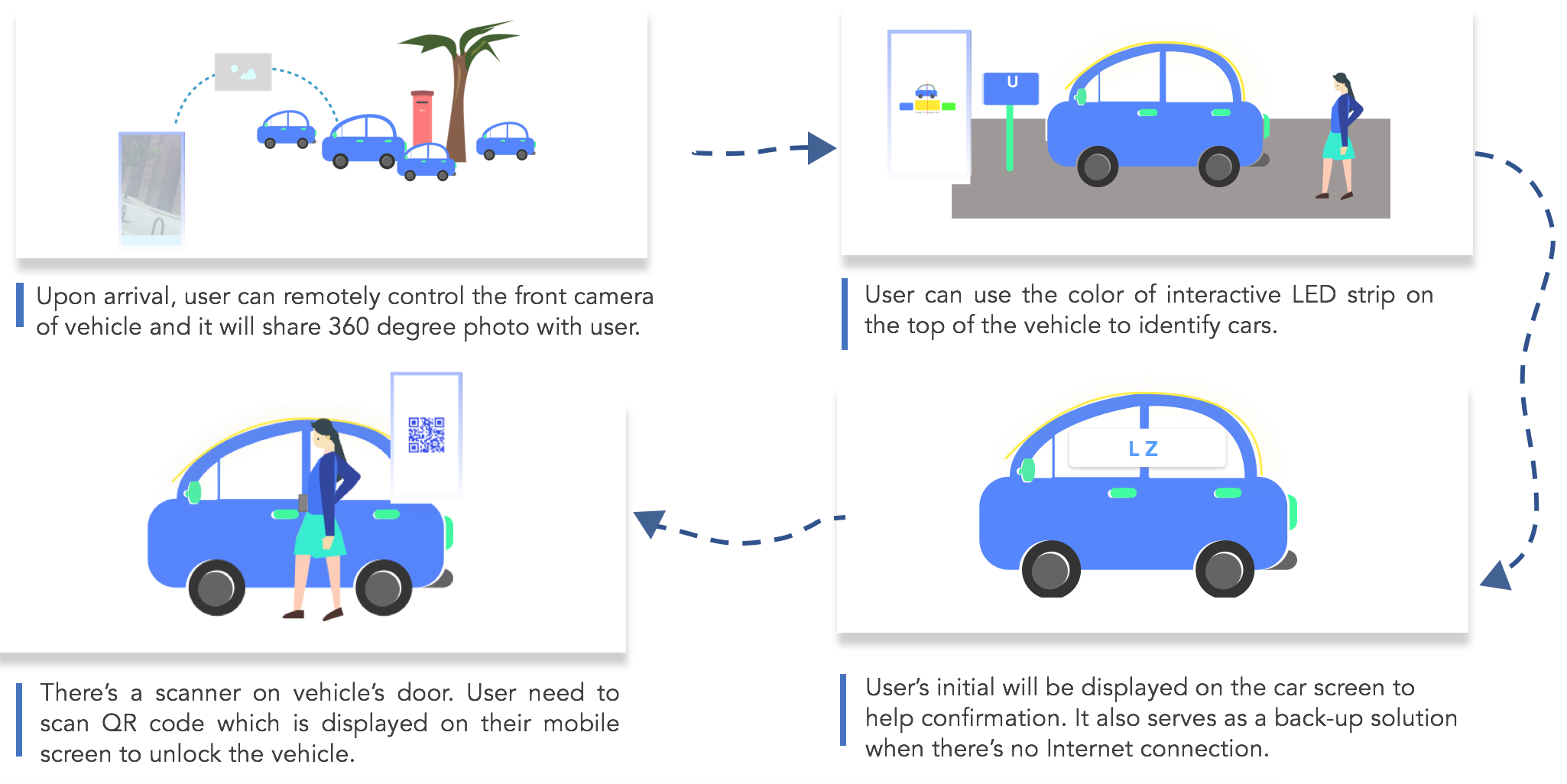

INFORMATION ARCHITECTURE

The ultimate goal of this project is not building a new service product or brand. More likely I would like to provide a solution or a potential proposal to existed service platforms, or build a plug-in to exsites apps. From that point ,the information architecture of this app is similar with most of current carpool service apps, which provides simple and linear usage process. Users would get to the map and select destination first, then getting a few options for transit rides and premium non-stop rides. When driver is taken away from the usage scenario, passengers are required to find their car by themselves. Several pages of finding assistant are added in to content.

VISUAL GUIDE


Google map system is used for users to track their location. However, the color system I use right now is only for demonstration. Color palette could be changed based on location, time, culture, personal preference, etc.

Main icons and logos are all illustration style instead of using real pictures. All illustrations share the same color palette as the app itself.


WIREFRAME

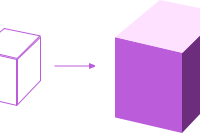
PROTOTYPE
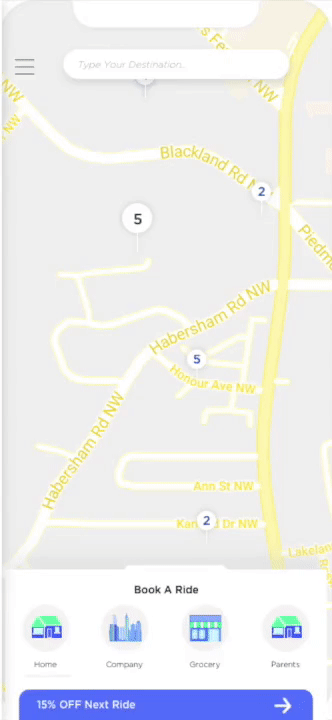


Once users are ready to depart, or would like to book ride earlier, they typed in destination first and there would pump out options for them to choose from including transit rides or non-stop rides. Users will receive instruction to walk to pick up point when they book the car.

While users can get vehicle location information by getting direction on the map, they could still get lost in an unfamiliar area, a multi-level building or deck, a covert parking spot or a crowded parking lot. With the help of GPS which is detecting distance between vehicle and passenger, a more helpful car finding system will be implemented. Upon the top of vehicle, there would be placed an LED strip light with a movable camera. Users are able to control light color and blink frequency to get confirmation from the car. If the color doesn’t work well, users can open the camera, share the same view as the vehicle to help them locate it.
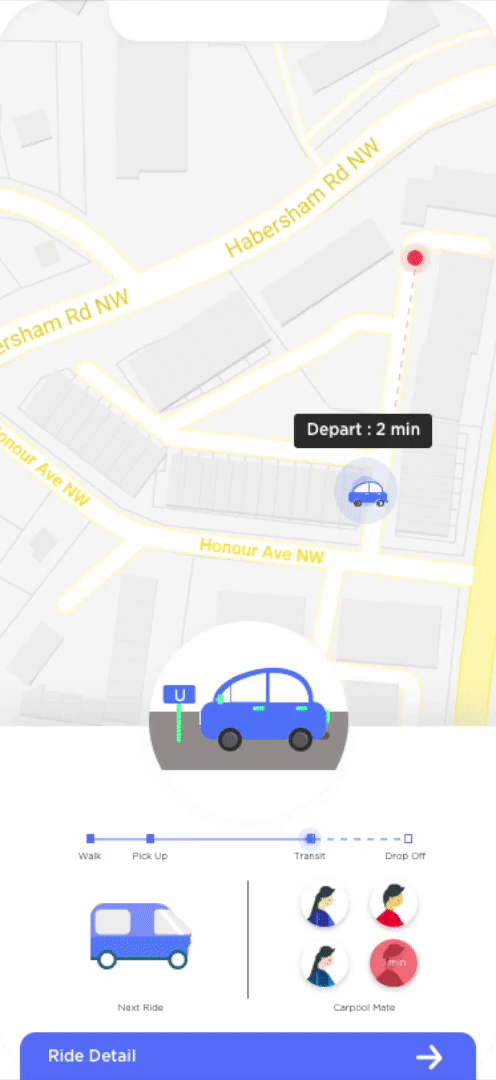
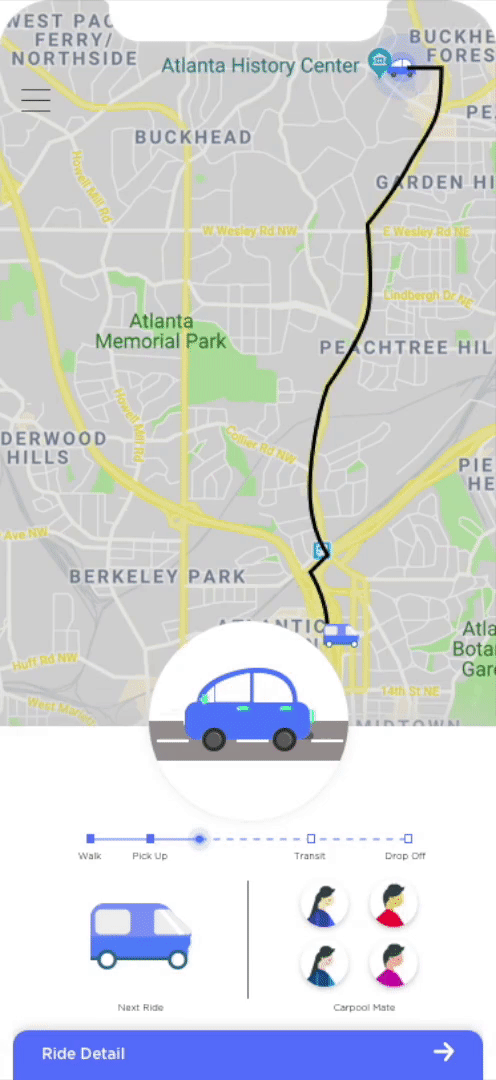
Only after passenger getting onto the vehicle they would be able to see their carmate’s status. Estimated departure time would be displayed depends on how far the last carmate is. Users can check their ride detail anytime during the ride.
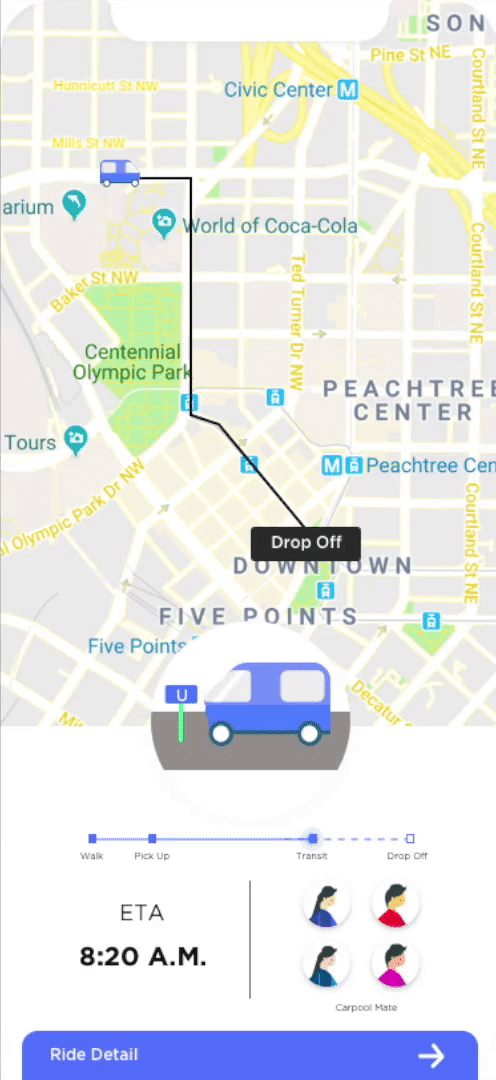
How to build a future user scenario for immersive user test experience?
Instead of building up the story content, I can chose to test the interfaces separately because it’s easy and I will still get valuable feedback on layout, usability and visual. However, it would be better if we could put the users in to the story scenario and make them act more like “real user” and have more immersive experience. In order to simulate the future car looking scenario, I built a scaled maze and by using video call, users are supposed to be mini characters exploring the maze and looking for the car.

USER TEST

User Test Set Up

With a product that comes up with its scenario, it’s hard to get authentic and reliable user feedback if separate the user from scenario simulation. However, due to the restriction on budget and time, full-scaled user testing is not the best solution. A scaled model set up in the lab was designed to create a scenario based user testing – especially when your solution comes up with physical products scenario.
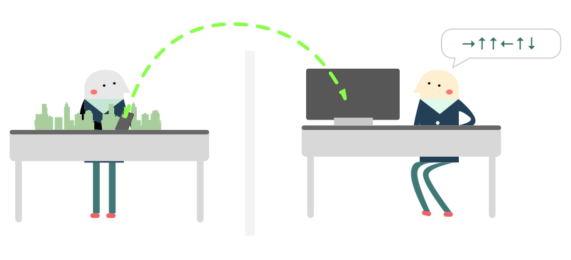
Users are required to sit at the front row of the seat and look through a camera to simulate a real-world scale.
User Test Results
Most of participants finished tasks. During the A/B Test, it took an average of 20 seconds longer for users to complete car seeking when there’s completely no signs and no help. The most useful feedback get from users are :
- The information display sequence should be reverse.
- The LED light control could start work ahead of time – Not all users are willing to look down at phone.
- The maps are helping – is there anyway to combine the map function with lighting and camera solution?
Design Concept Refine
Upon feedbacks from user and video/audio record analysis. The user journey was revised and correspondingly interface design was updated :
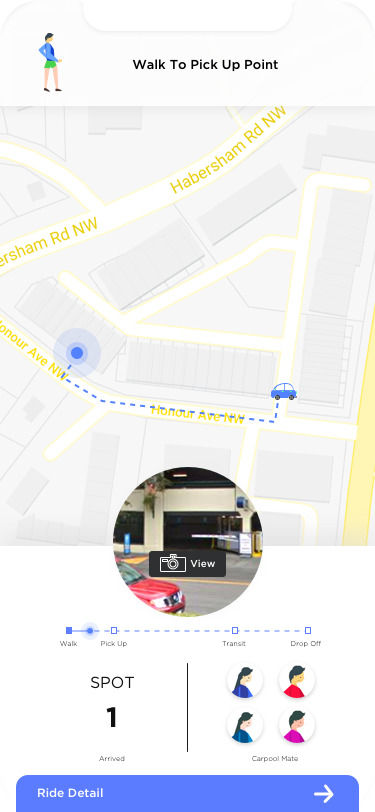
Users have the right to skip car seeking process if the ride happens in a familiar area with a good traffic condition.
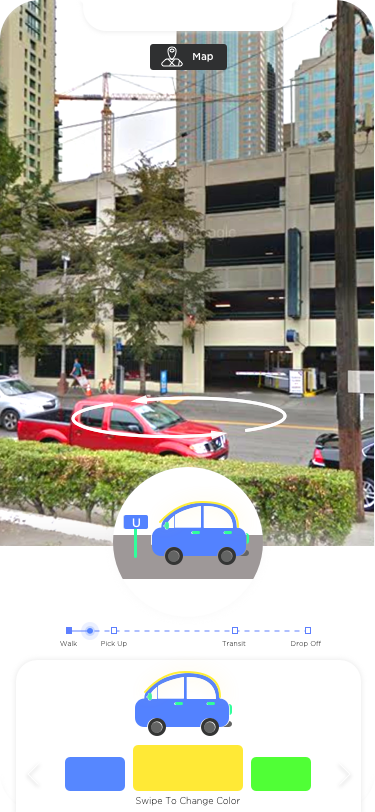
While user is walking toward the vehicle, the main screen would show what’s the car’s surrounding is and gives the passenger a range of searching area.
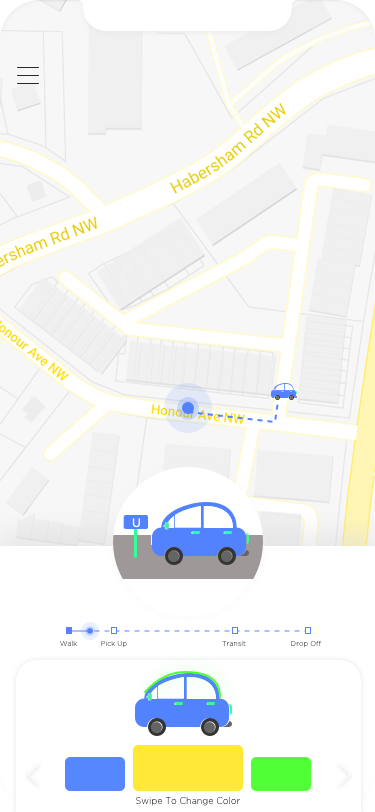
When surrounding information is not necessary or passengers have already reached the correct vehicle area, user would be able to trigger LED Color and blink to accurately find the car.
